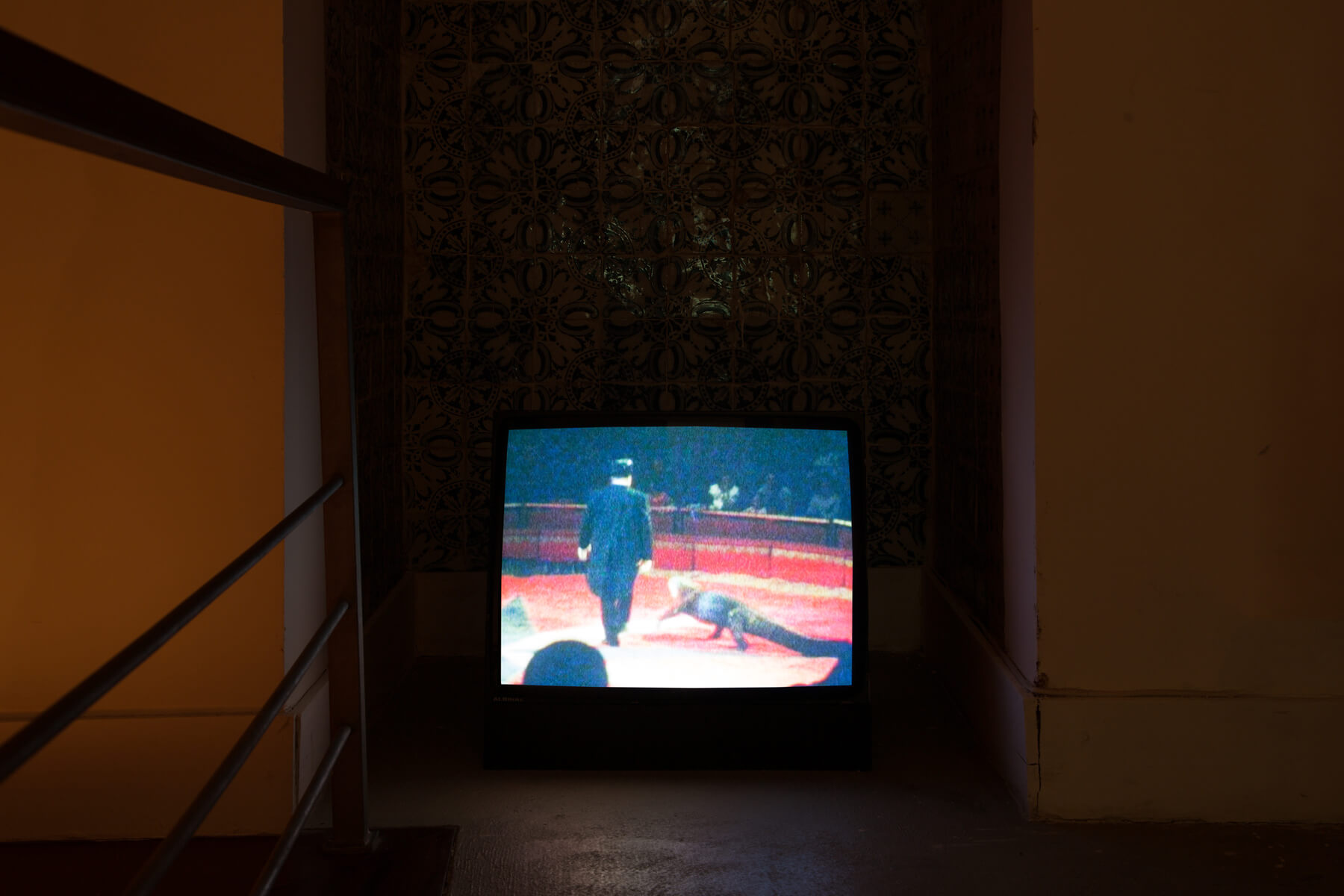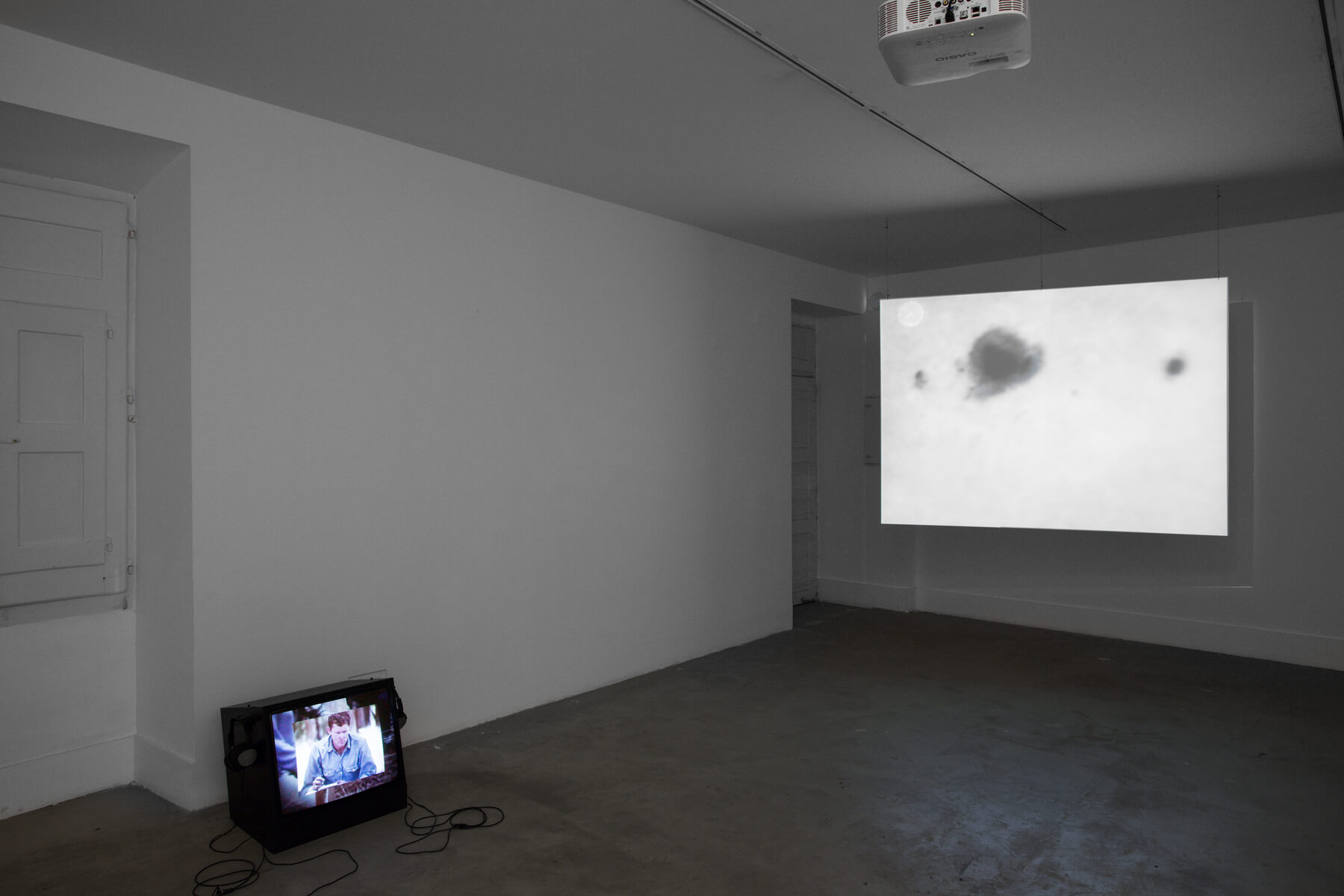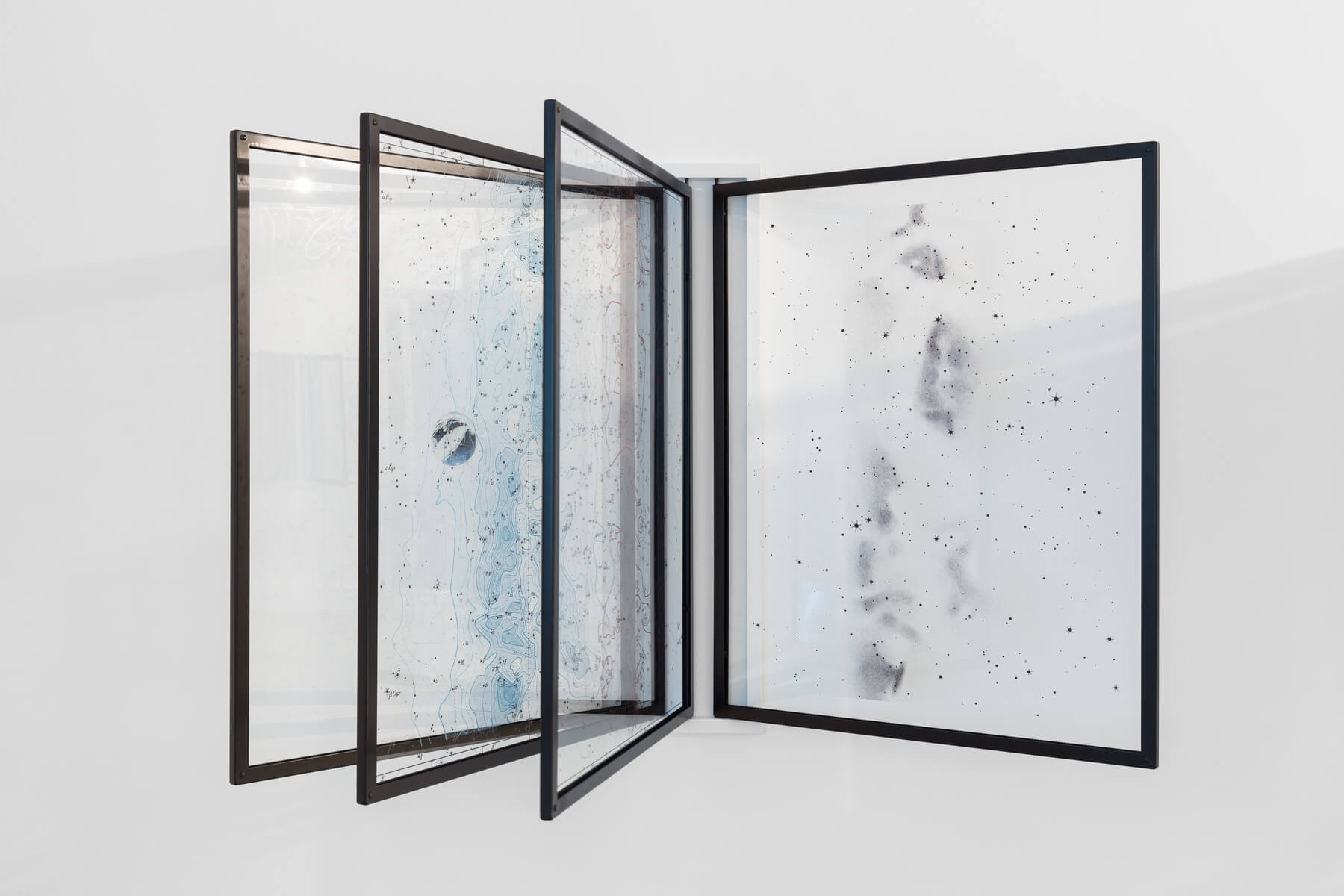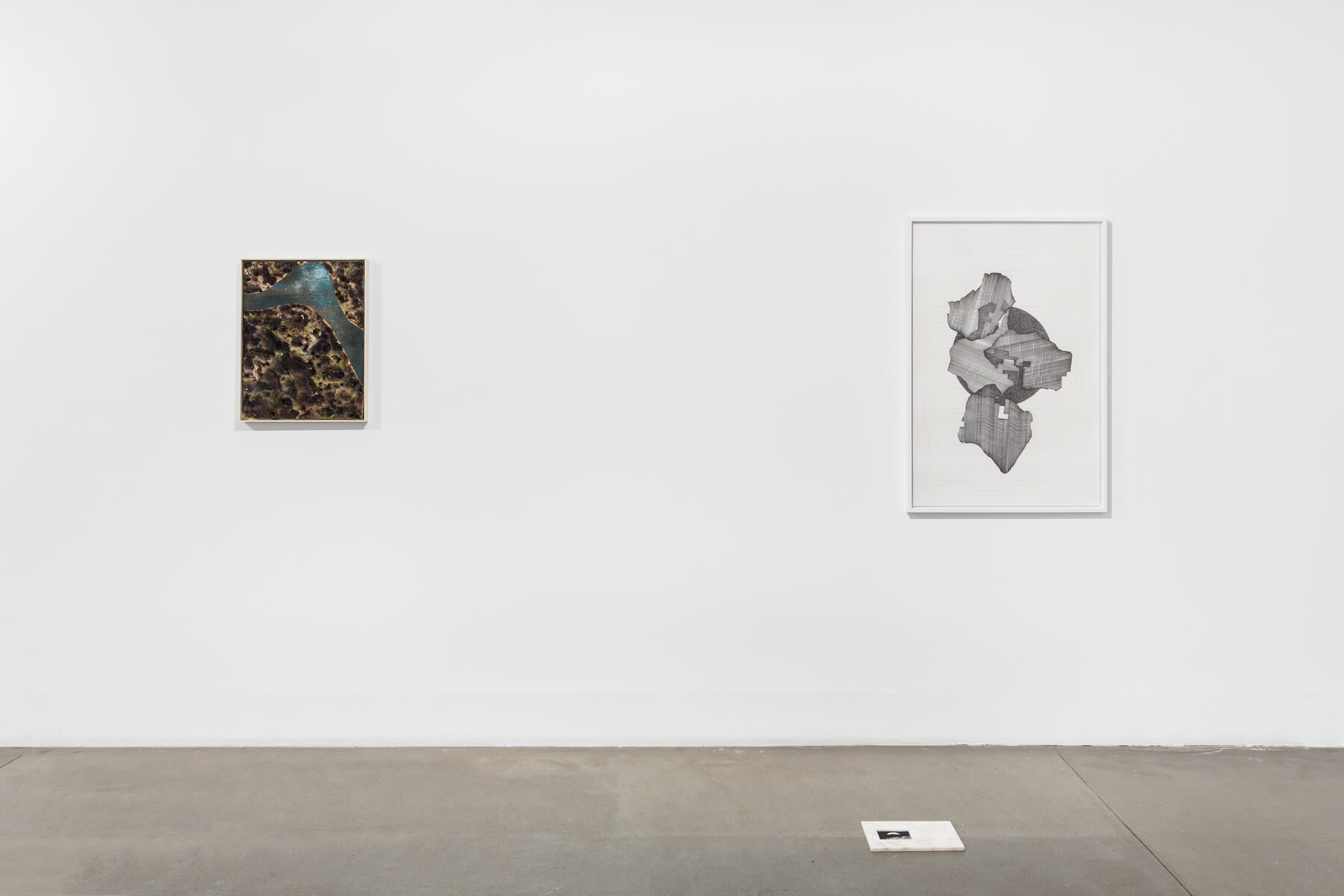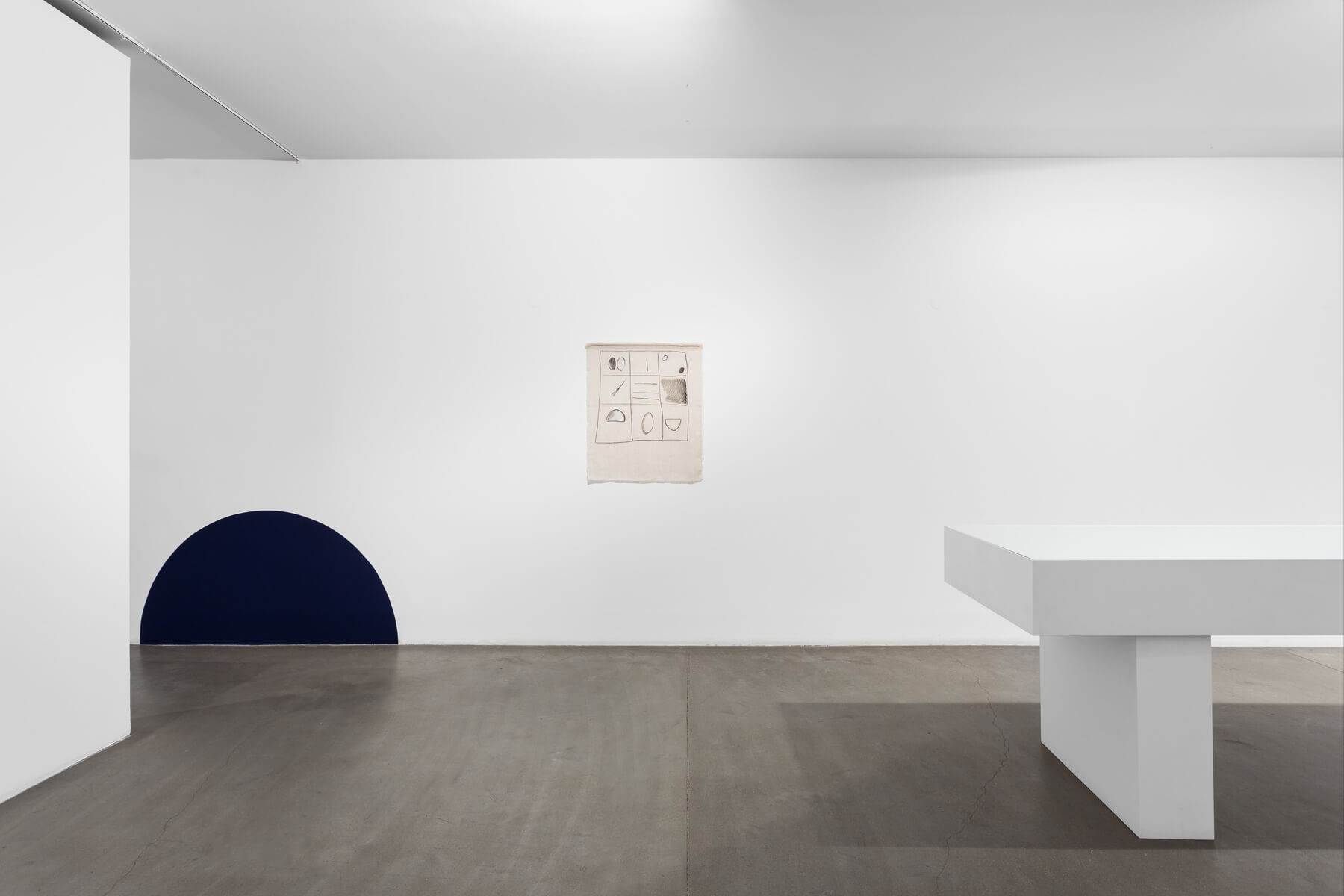– 10.03.2018
As part of the Open Call for Young Curators launched by the EGEAC – Galerias Municipais in 2016, aiming to foster, disseminate and support contemporary artistic creation and thought in the city of Lisbon, and underlining the importance of young curators as key mediators alongside new generations of artists, the Galeria Boavista is set to host the four winning curatorial projects. Previous curators included Alejandro Alonso Diaz, Sara De Chiara and Inês Geraldes Cardoso. The final edition will host a project conceived by Sofia Lemos. Engaging artistic practices that approach the geocosm as a moving agent, the exhibition conveys national and international artists including Amélie Bouvier, Ana Manso, Ana Mazzei, Andreia Santana, Bernard Lyot, Davide Zucco, Elias Heuninck, Ester Fleckner, Haris Epaminonda, Jeronimo Voss and Pedro A.H. Paixão, many presented in Portugal for the first time
“To understand physical reality seems to demand not only the renunciation of an anthropocentric or geocentric world view, but also a radical elimination of all anthropomorphic elements and principles, as they arise either from the world to the five human senses or from the categories inherent in the human mind.”[1]
– Hannah Arendt, The Conquest of Space and the Stature of Man, 1963
On October 16 2017, astronomers witnessed two neutron stars collapsing into each other deep in space. The encounter irradiated large amounts of gold and other heavy elements in an unprecedented elemental outburst. Parsed by colonial modernity through a line in the direction in which the force of gravity acts on these expanses–the cosmic and the geological – the slow sedimentation of these elements is codified on the one hand, in earthbound fossilized forms of energy and, on the other, as gaseous clusters of evolving radiation, and circulated in modes of value creation and exchange in the form of dispossession. Today, as cosmic effusion is increasingly placed at the forefront of the radiant promises of the technosphere and under commodity and asset mediation, metals and minerals remain fettered by political and corporate boundaries. And yet, woven into the planetary surface as sedimented records displaced in time, these ensuing cosmic elements have a language of their own.
Jules Verne’s L’Étoile du sud [The Southern Star] (1884) situates this movement of partition and plunder in a modern cave allegory. Michael Serres describes Verne’s cave as a field of communication networks between stratified and mineral agents: “[it] inverts the Platonic one by being a small-scale model of the outside world itself. In this instance, it is composed of hard-stone crystals, corundum or beryl, as well as glittering mirrors, sparkling illuminations, incandescent and vibrant fireworks—each multiplying the reflections of one another, emitting, receiving and exchanging millions of pieces of information on themselves. Both medium and message, the diamonds return the brilliance of sardonyxes to the lapis-lazuli, and the rubies reflect the flares of the aquamarines whilst the emeralds mirror themselves in the large looking glass of topaz. (…)”[2] Inside the cave, light-rays abstract and homogenise reflections universalizing and unifying theories of form. Yet, rooted in histories of slavery, colonialism and gender oppression, how were the boundaries of mineral rights justice set forth by normative frameworks? And how are they useful in accounting for the historical reminders of the mineral and metal sediments that have been plundered by colonial agents and by the contemporary prospections of globalized capital?
In the 1974 short story The Stars Below, Ursula K. Le Guin tells the tale of an astronomer accused of heresy who finds refuge in the dark oblique paths of a mine. Here his vigilant nights of observation unfold in timeless periods of rock picking in search of brightness. Where the obscurity of the mine gave away to the astronomer’s cosmic will to find light, the mineworkers eventually gave into the astronomer’s inquisitiveness. They showed him how to swing the sledge with a pickaxe, how to look for the branchings of metal, and how to sort the rich from the rock. In Le Guin’s story of dissent and exile, the space of the mine casts human, geological and capital time as astronomically continuous.
Already in the nineteenth century, Karl Marx recognized a problem of sustainability in the dynamic processes, systems and flows of energy, when he first referred how the logic of capitalist accumulation and neoliberal reasoning ruptures the metabolism of the earth’s systems, severing its basic operations of renewal. An important contribution to Marx’s formulation came from an unsung Belgium astronomer and geologist who played a significant role in the 1848 insurgent revolts in Brussels, Jean-Charles Houzeau de Lehaie (1820-1888). While it remains untold whether Houzeau, Marx and Friedrich Engels crossed paths in Brussels during the revolutionary socialist years in which they wrote The Communist Manifesto (1847), Marx’s private library preserved a copy of Houzeau’s Klima und Boden [Climate and Soil] (1861), where Houzeau first plots relations between landforms, geological events and anthropogenic action later explored by Marx in the third volume of Capital “The Process of Capitalist Production as a Whole.”
In Now it is Light, diffraction operates in the emerging relation between the substratum and the cosmic as a movement from which to unhinge the planet itself and those narratives encrusted in cave allegories. Caught in the tightly woven practices of chronological succession, commensurability and measurement as they determine the modern boundaries by which identity and memory are conformed, Ester Fleckner and Pedro A.H. Paixão explore the civilizational viewpoints in which the observed universe, from the infinitely small to the infinitely large, escapes human sense perception. Acting in slow choreography, Paixão repositions the viewer against the histories of timekeeping while Fleckner disposes of anthropometry altogether in order to propose gender and race categories as fragmentary and irreconcilable protocols of representation.
Both speaking the language of light, the melancholic gazes of Bernard Lyot and Haris Epaminonda explore the refusal of inevitability with regard to linear time. While Lyot’s first moving images of the solar corona chronicle the earth’s sustenance, Epaminonda foregrounds gleaming reflections of civilizational progress and the discrete nature of capturing and captivity. In a time when anthropogenic sedimentations are transforming previous geological compositions Ana Mazzei and Davide Zucco propose an intercalated reading of past, present and future tenses and how these construct objects of research. While Mazzei explores the planetary substratum by intercalating narrative between hard rock, Zucco uncovers cosmological scenarios where from to explore the materiality of the cave. Andreia Santana offers a witness account of labour’s agency in unearthing material memories that conflate in cave allegories. By converting fieldwork into a field event, a gestural impulse towards the rightful mediation of historical time falls short in a dubious claim over civilizational plots.
Following the multiple trajectories of an iron meteorite that shattered from its apparent route in eastern Siberia in 1947, Amélie Bouvier proposes a ‘future archaeology’ where impact craters from outer space lend themselves to the understanding of land dispossession by geological and military surveys. Elias Heuninck explores one of the largest surveys of the night sky of the 20th century, the Carte du Ciel (1887-1970), in a slapstick meditation on the emergence of the night sky as itself or as the by-product of a mediated optical relation with the universe. Jeronimo Voss conveys the composite naked eye views of the Milky Way mustered by Dutch socialist astronomer Anton Pannekoek from exact bookeepings made by a group of amateur astronomers between 1890 and 1927. Both informed by the history of socialist and cosmopolitan principles of self-organization, Heuninck and Voss, in collaboration with the Royal Observatory of Brussels and the Anton Pannekoek Institute for Astronomy at the University of Amsterdam, explore star clusters across multiple scales from the planetarium to the cosmic plenum.
As an invitation to look through the earth from the perspective of the universe, Ana Manso unsettles the relation between figure and background confounding literality with the abstraction of the form. Positioning these manifold narratives in dramaturgy that moves inwards and outwards, Manso re-contextualizes the circle, parsing it as if it were modernity itself.
– Sofia Lemos, curator
[1] Arendt, Hannah. 2007. “The Conquest Of Space And The Stature Of Man”. The New Atlantis 18: 43.
[2] Serres, Michel. 2014. “Matter and Information” in Textures of the Anthropocene: Ray. Cambridge, Massachussets: MIT Press. 327.
– 10.03.2018






